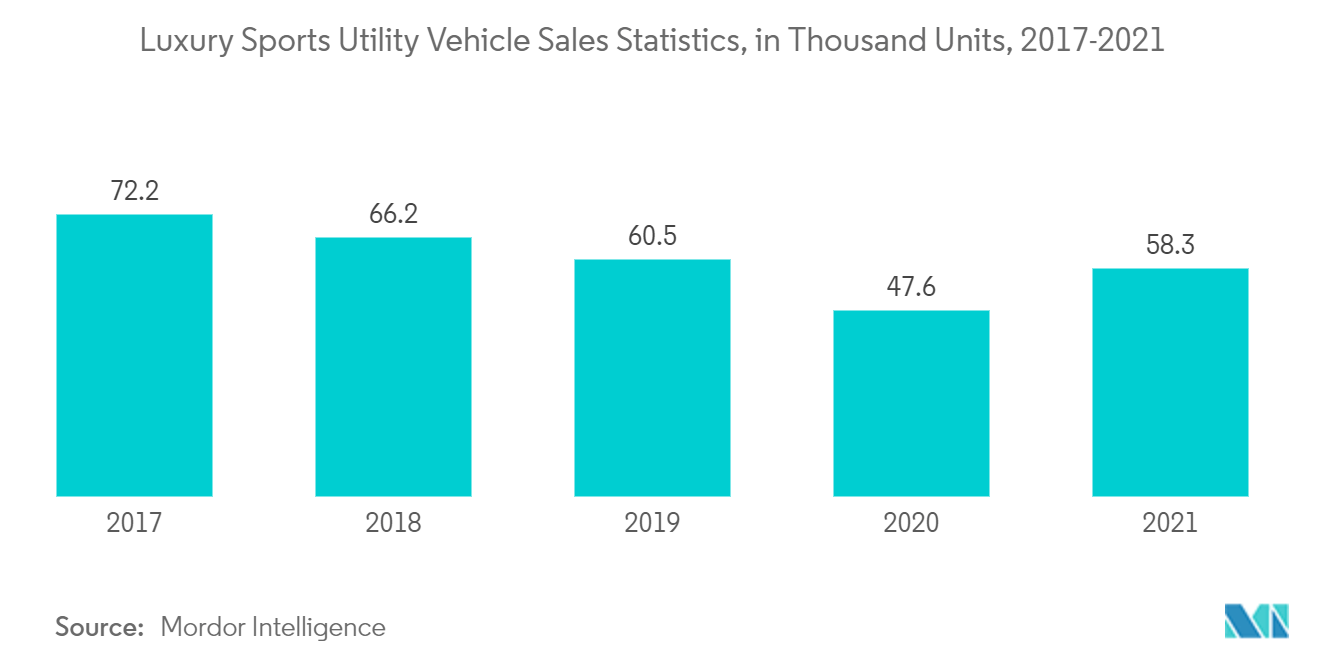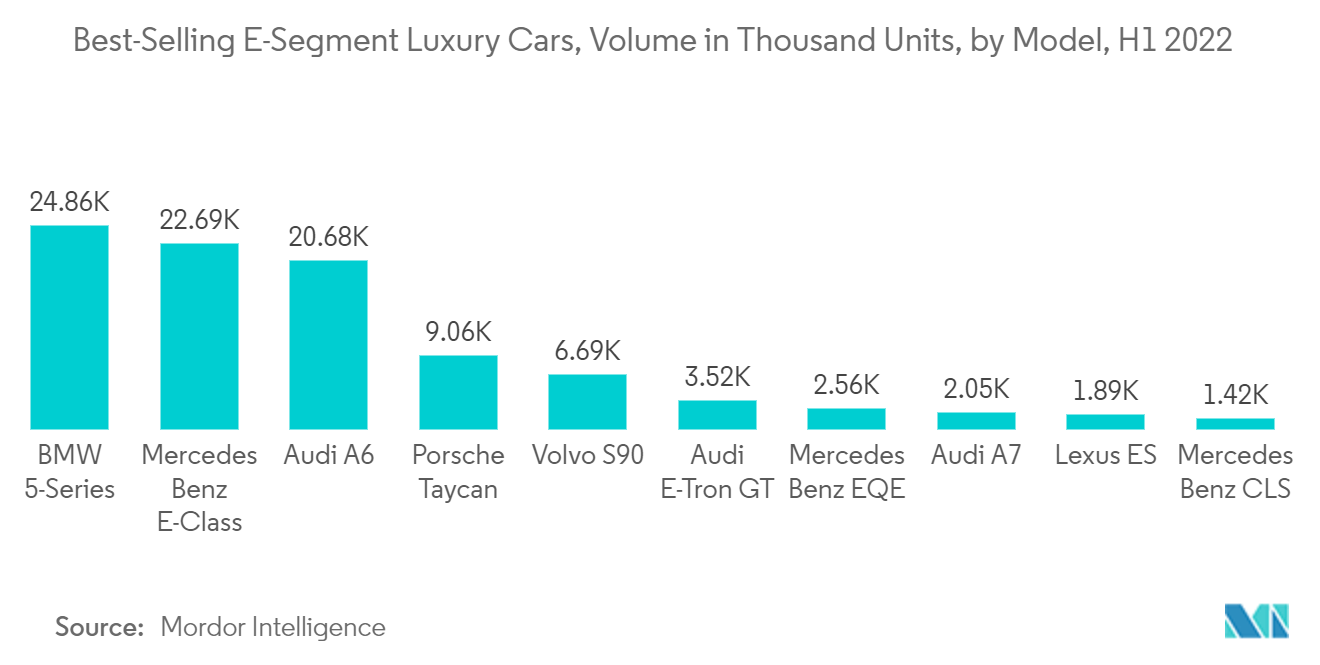Market Trends of Europe Luxury Car Industry
This section covers the major market trends shaping the Europe Luxury Car Market according to our research experts:
SUVs are anticipated to witness higher growth in the European Luxury Car Market
The European luxury car market is expected to be driven by SUVs. Traditional passenger cars are losing their hold in the market. It is a global trend that started in the US and then spread to Europe and Asia. Some of the brands whose best-seller SUVs are in Europe are Nissan, Hyundai, Kia, Mazda, Mitsubishi, Jaguar, Lexus, Porsche, Maserati, and Volvo.
Currently, most European luxury brands have shifted toward crossover SUVs to witness elevated sales figures. Most of today's available luxury brands have showcased their SUV sales as more than three-quarters of their volume. Furthermore, it has been expected that the SUV segment is expected to witness a boom with changing consumer behaviors for procuring more spacious and luxury vehicles. Another important reason for the sudden spike in the production of SUVs is the emission norms in the EU, where cars are responsible for around 12% of total carbon dioxide (CO2) gas emissions.
The emission targets for car manufacturers are set according to the average mass of their vehicles. This means that heavier cars' OEMs are allowed higher emissions than manufacturers of lighter cars. Key automakers in Europe are looking for frequent launched of luxury SUVs to witness the demand.
For instance, in June 2022, British off-roading premium SUV manufacturer Land Rover launched its third generation, most celebrated SUV Defender 130. This new Defender SUV is equipped with eight seats and is expected to appear at USD 78,539.
Additionally, in June 2022, Pollstar announced that it was working on a new range of its first electric SUV, which was expected to debut in the market by October 2022.
Considering these factors, the demand for luxury SUVs in the European auto sector is expected to pick up traction and is expected to grow significantly over the coming years.

The United Kingdom and Germany to Likely to Play Key role During the Forecast Period
The German automotive sector has been the backbone of the European automotive industry for the last decades. Germany has evolved into one of the largest countries in producing and innovating high-tech automotive products. In addition, a net of +60% growth has been observed in Europe's automotive sector for R&D on the back of Germany. This showcases the strong innovation hub playing a pivotal role in the demand for automotive smart glass.
Although the economic slowdown has affected several markets worldwide, the German automotive industry has been stable. In 2019, passenger car sales increased by 4.99% to 3.6 million units, as compared to 3.4 million units the previous year.
In the United Kingdom, many car manufacturers, like Audi, BMW, Nissan, and Range Rover, offer luxury comfort in their popular models, like Q-series, X-series, Qashqai, and Evoque, respectively. The premium car segment has been registering considerable sales within the country. The preference for SUVs is evident among customers. The best-selling cars in March 2022 were Tesla Model Y (6,464 units), Tesla Model 3 (6,457 units), Vauxhall Corsa (5,515 units), Nissan Qashqai (5,401 units), and Hyundai Tucson (4,876 units).
Several auto manufacturers in the luxury car segment are creating an alliance with technology suppliers. Moreover, several products launched in Germany and the UK have been key catalysts in elevating the luxury car demand.
For instance, in June 2022, the Kerala-based global automotive software company was expected to start working on the advanced infotainment program of German luxury carmaker BMW.
Additionally, in September 2021, Daimler AG, a German car maker, announced that it would team up with Stellantis NV and TotalEnergies SE to boost its scale of European battery venture to more around EUR 7 billion and secure supplies for electric Mercedes-Benz luxury cars.
Considering these aspects, the demand for luxury cars is expected to boom under the United Kingdom's and Germany's dominance.


